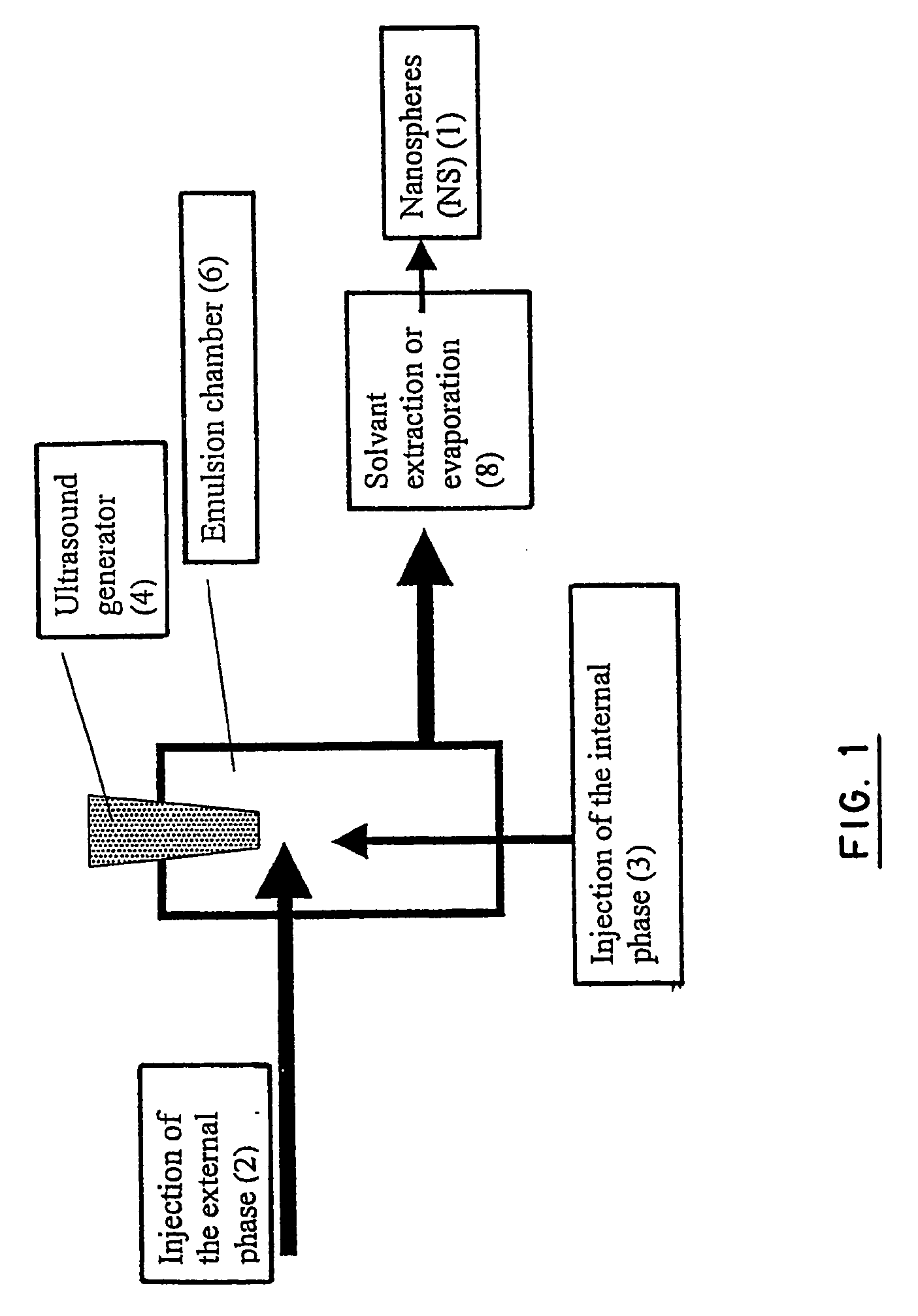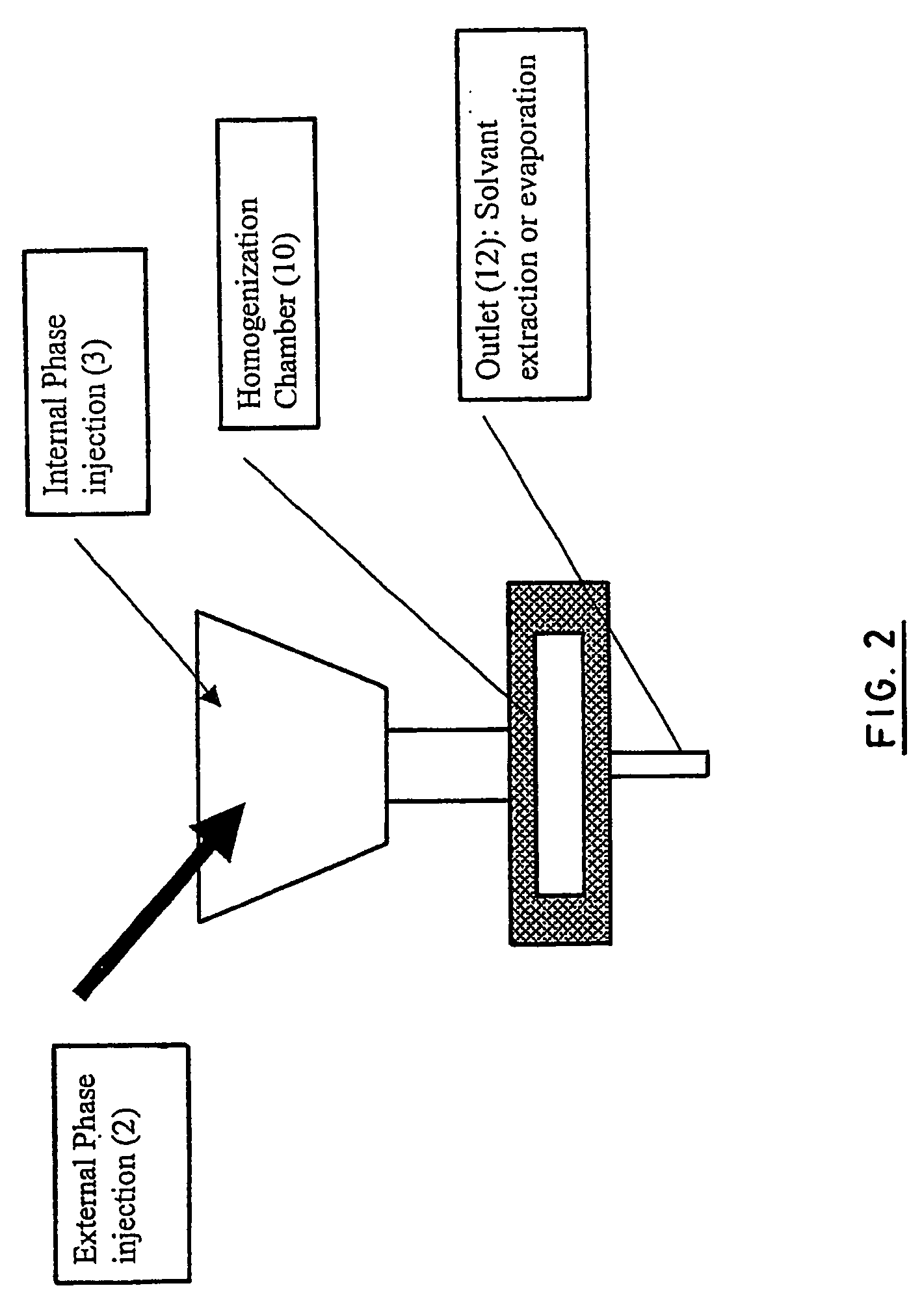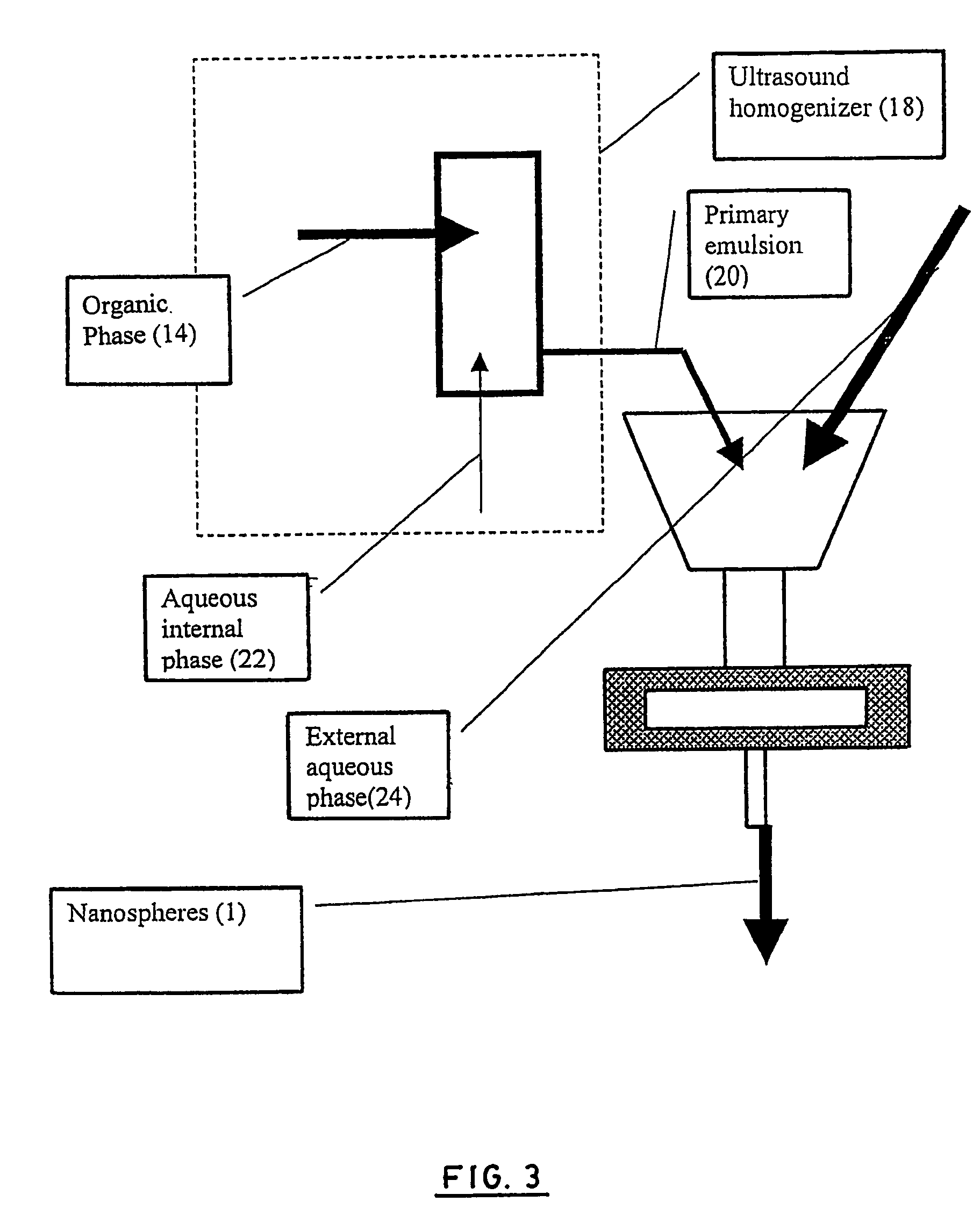Stealthy polymeric biodegradable nanospheres and uses thereof
a biodegradable nanosphere and polymer technology, applied in the direction of capsule delivery, layered products, pharmaceutical non-active ingredients, etc., can solve the problems of rapid elimination of polymeric nanoparticles or liposomes from the bloodstream by the phagocytic cell system, and achieve stable mechanical and chemical properties in vitro, prolong the biological effect, and improve the effect of drug delivery
- Summary
- Abstract
- Description
- Claims
- Application Information
AI Technical Summary
Benefits of technology
Problems solved by technology
Method used
Image
Examples
example 1
Synthesis and Characterization of Novel PLA-PEG Multiblock Copolymer
Introduction
[0115] Biodegradable polymers are studied in an increasing number of medical applications. They are used as drug carriers, controlled release systems, etc. Some authors are interested in the possibilities that a copolymer consisting of polylactic acid (PLA) and polyethylene glycol (PEG) can offer. A multiblock copolymer composed of PLA and PEG is of considerable interest as a drug carrier, since the PLA segments could provide rigidity, while the PEG portions confer stealth behavior (R. H. Muller. CRC Press Inc., Boca Raton, Fla., 1991: 45-46). PEG can offer a certain degree of hydrophilicity to the polymer that can be useful if we want to use it as a carrier for an hydrophilic drug. But the current ring-opening polymerization of (D,L)-lactide in the presence of PEG can only produce an A-B-A triblock copolymer where the B block (PEG) is trapped between two A blocks (PLA).
[0116] We propose here an effi...
example 2
Injectable Nanospheres from a Novel Multiblock Copolymer: Cytocompatibility, Degradation and in vitro Release Studies
Introduction
[0126] Recently, polymeric drug delivery systems have been extensively investigated as long term and controlled release devices. Such systems, which are in the form of microcapsules, microparticles, or nanoparticles, are found to be useful carrier systems for many drugs (indomethacin, piroxicam), ciprofloxacin, gentamycin, antineoplasic agents (cisplatin, adriamycin), proteins (bovine serum albumin, interleukin-2), and vaccines (tetanus, diphtheria toxoid). As injectable drug carrier systems, nanospheres (NS) made of polymers are the most used colloidal devices. They are solid particles ranging in size from 10 nm to 1000 nm. The NS are stable drug delivery forms compared with other systems such as liposomes which present some inconveniences such as limited physical stability as well as poor drug loading capacities. Since the NS provide sustained release...
example 3
In vivo Properties of (PLA-PEG-PLA)m Nanospheres as a Drug Carrier
Introduction
[0159] Intravenous injection must be done by the use of particles smaller than 1 μm. On the other hand, smaller are the particles higher are the elimination, the aggregation and faster is the release of drug. The nanoparticles described here have been developed to avoid these inconveniencies. The polymer synthesis and the drug carrier preparation have been described elsewhere. Briefly, the polymer is a multiblock copolymer, where blocks of PLA and blocks of PEG alternate. The nanospheres have been prepared by an emulsion-solvent evaporation method using a continuous flow ultrasound homogenizer. Release profile, cytocompatibility, degradation, and pharmacokinetics have been described previously. In vitro and in vivo release profile demonstrate a three-step release with peaks at 25, 250 and 500 hours. This particular mechanism is clearly related to drug carrier properties, but the behavior after injection...
PUM
| Property | Measurement | Unit |
|---|---|---|
| size | aaaaa | aaaaa |
| size | aaaaa | aaaaa |
| size | aaaaa | aaaaa |
Abstract
Description
Claims
Application Information
 Login to View More
Login to View More - R&D
- Intellectual Property
- Life Sciences
- Materials
- Tech Scout
- Unparalleled Data Quality
- Higher Quality Content
- 60% Fewer Hallucinations
Browse by: Latest US Patents, China's latest patents, Technical Efficacy Thesaurus, Application Domain, Technology Topic, Popular Technical Reports.
© 2025 PatSnap. All rights reserved.Legal|Privacy policy|Modern Slavery Act Transparency Statement|Sitemap|About US| Contact US: help@patsnap.com



